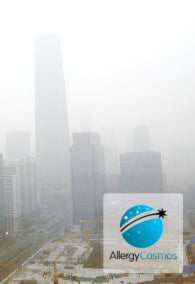At last, it appears that the Chinese government has seen where it is going wrong – namely, that promoting development fuelled by coal is threatening the health of the population, through excessive exposure to pollution. Now there is to be a ban upon the construction of new coal-fired power plants around the cities of Beijing, Shanghai and Guangzhou. Instead, in the hope of controlling China's air pollution, the emphasis will shift towards natural gas and nuclear power. Currently more than two-thirds of China’s power plants are coal-fired, so this is a big change. The goal is to lower electricity production by coal to less than 65% by 2017. To help achieve this, the cities of Beijing, Tianjin, Hebei and Shandong have been ordered to cut their consumption of coal by a total of 83 million tonnes by 2017 (it is currently 670 million tonnes in total).
In another development, the Chinese government also intends to produce a monthly list of the cities with the cleanest and dirtiest air. The Chinese government believe that this ‘naming and shaming’ exercise in regard to air pollution will push local governments to do more to curb pollution in their area. This comes in the wake of a new study which spells out the toll produced by the policy of giving out free coal to people living in the north. As a result, air pollution from burning coal in the area to the north of the Huai River was 55 per cent higher than in the south. The area houses around 550 million people. The study, by researchers in China, the US and Israel and published in the Proceedings of the National Academy of Sciences looked at pollution levels and deaths in 90 cities in the north and south between 1981 and 2000. There was a sharp increase in particulate pollution in the south. An analysis of mortality statistics for 1991 to 2000 revealed that life expectancy in the north was 5.5 years lower.
Meanwhile, those living or travelling in China – be they native resident, business or leisure visitors – need access to accurate real time information on air pollution to protect their health. There is a new app for iPhone or iPad called the China Air Quality Index. It is free to download and provides information of air quality in several Chinese cities, with advice on what to do – for instance, whether it is safe to exercise outside. The US Embassy in Beijing has its famous PM2.5 air pollution monitor, which also provides real time information on levels (though only on this particular pollutant). PM2.5s are particularly dangerous, for they can be inhaled deep into the lungs, setting up long-term inflammation. The service has been extended to the cities of Chengdu, Guangzhou, Shanghai and Shenyang. Shockingly, when I checked on the day of writing this (29/09/2013), PM2.5 levels were classed as very unhealthy, unhealthy or unhealthy for sensitive groups (e.g. those with asthma) in all five cities. These are useful tools for revealing the extent of risk that those living and working in China are currently exposed to because of urban air pollution in the country.
Further information:
China Air Quality Index app is downloadable at - https://itunes.apple.com/us/app/china-air-quality-index/id477700080?mt=8
US Embassy PM2.5 information - http://www.stateair.net/web/post/1/1.html




